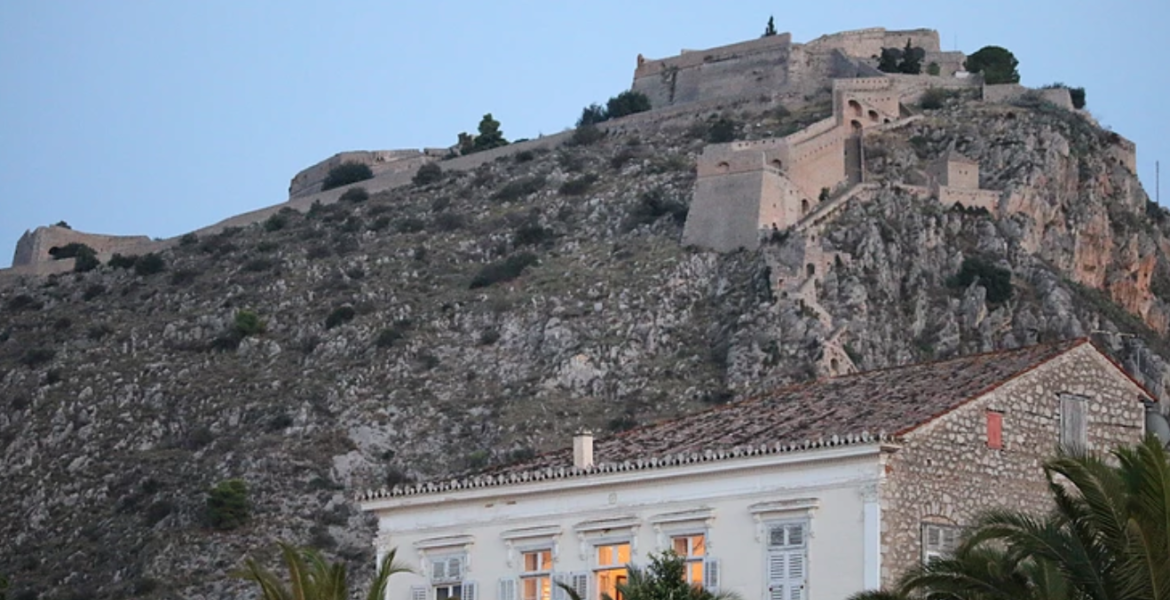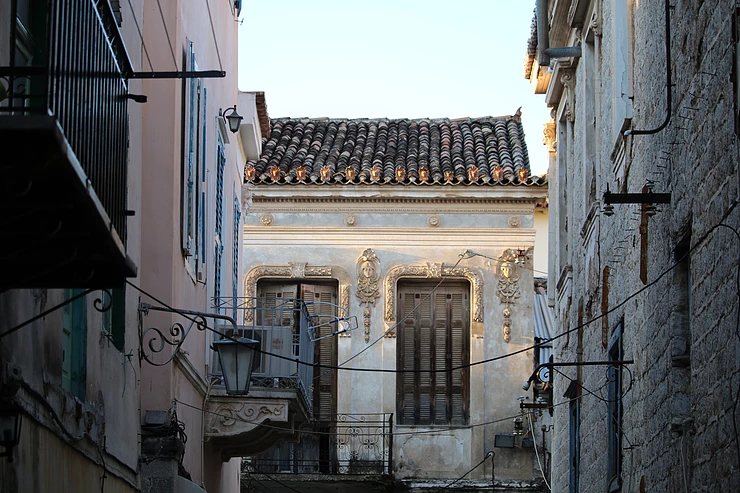
The first capital of the modern Greek state is a picturesque seaside town in the Argolida region of the southeastern Peloponnese. Considered a romantic escape for travellers, Nafplio is often featured in weekend get-away lists, as it is in close proximity to busy Athens. Colourful neoclassical buildings, balconies with the blooming flowers, and beautiful sunset views from the top of Palamidi fortress contribute to the town's idyllic character.
This idealised image of an earthly paradise most certainly does not bespeak Nafplio's intriguing dark side, one that includes a number of quite sinister stories that can be traced in the buildings and landmarks around town.
Ιn fact, in the years following the Greek Independence, Nafplio became the ideal setting for murder, exile, imprisonment and riots against the King Otto of Greece.
The town's name has changed multiple times over the centuries. It was called Nauplia and Nauplion by the Greeks, named after the mythological son of Poseidon, the admired traveler and sea expert Nauplios; Napoli di Romana by the Italians; and Mora Yenişehir and Anabolu by the Turks.
Nafplio was under Greek rule in 1204, when the Byzantine emperor Leon Sgouros tried to establish his monarchy there. It later passed to the Venetians, who lost it to the Turks in 1540. The town was constantly changing hands between Venetians and Turks, who alternately contributed to the construction of the town’s fortress, Palamidi. Who would have imagined back then that this same town would be later playing a vital role in the establishment of the modern Greek state?
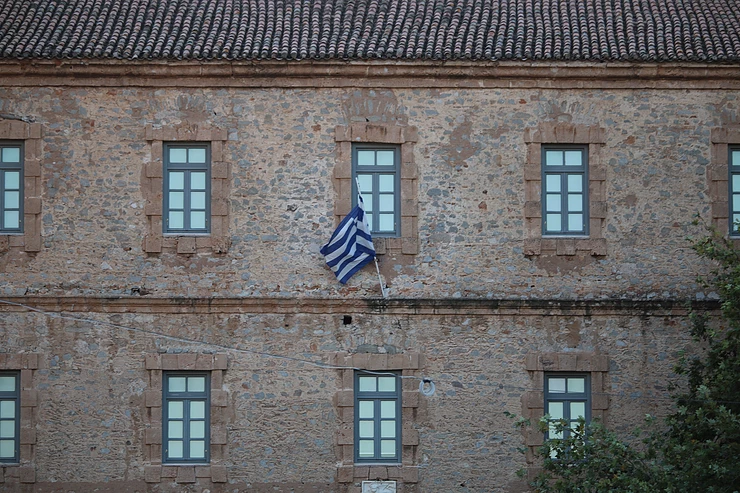
Nafplio's architecture echoes a harmonious blend of Greek, Venetian and Turkish styles, whose influence remains visible when taking a stroll around the town centre.
Discovering Nafplio, one cannot miss what is arguably the town's most remarkable building: Vouleftikon. Situated in the heart of the town on Staikopoulou street on the southwestern side of Syntagma, the building was originally erected as a mosque in the early 18th century, and housed the first Hellenic Parliament in 1825, until Athens became the capital of Greece in 1826. Its most distinguishable feature is a large square room supporting a dome of impressive proportions.
According to local tradition, the mosque was built in 1730 by order of the Ottoman Aga Pasha, to amend for a terrible crime he had committed. As the story goes, two Venetian brothers returned to town in search of a family treasure of immense value their father had left behind when the Ottomans took over. With the help of a map, they concluded that the loot was located in a vault exactly under the Aga Pasha's mansion. They asked for his cooperation in locating the treasure, but tempted to keep it for himself, the Aga Pasha murdered the two young men. Overcome with guilt, he sought to amend for his sin by using the gold to build a mosque. It is believed that the Aga Pasha never lived to see the building complete, as he himself committed suicide.
The seat of government was gradually moved to Nafplio after the separation from the Ottoman Empire. In 1825, Vouleftikon hosted the first Greek Parliament and in 1827, the town officially became the capital of the independent Greek state. However, when it comes to politics, Nafplio's inhabitants were never at rest.
Though Nafplio was the first capital of Greece, it was also the first town to oppose the King of Greece.
Just across Vouleftikon, where the National Bank of Greece is located nowadays, used to be the house of the grand dame of Nafplio, Kalliopi Papalexopoulou. She was one of the leaders of the anti-Otto uprisings, and her house became a meeting point for all those expressing liberal ideas. Nafplio hosted exiled politicians and gradually became a hub for those who stood against the monarchy, leading to an insurrection in 1862. The general demand was to get rid of the so-called vavarokratia, meaning the rule of Greece by a non-Greek, Bavarian king. Riots slowly expanded throughout Greece, eventually leading to the royal couple’s dethronement.
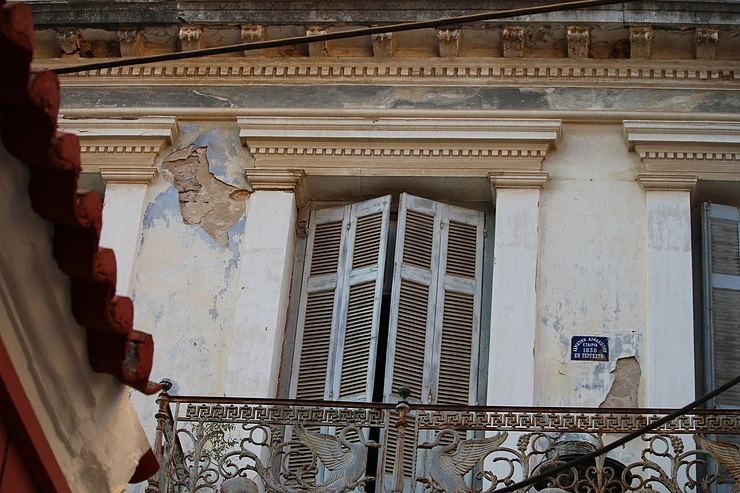
Less than 200 meters away from Greece's first parliament stands the Church of Saint Spyridon. Erected in 1703 by Orthodox Greeks, the structure features a characteristic cross shape and octagon dome. One early Sunday morning in September of 1831, the first Governor of Greece, Ioannis Kapodistrias, was shot dead before the church steps. Konstantinos Mavromichalis and his nephew, Giorgos Mavromichalis were accused of the act and executed. These two hailed from a popular family of leaders in the 1821 revolution who rivalled Kapodistrias. Τhe tension between the two parties had deepened as Kapodistrias was working to suppress a rising movement against his government that was initiated by Mavromichalis in the region of Mani.
Interestingly, this version of the story is questioned by some, who are not convinced by the personal conflict scenario. Why was the politician killed in broad daylight, on a Sunday morning, in front of a church where the murderers could be seen by any passer-by? Why are the testimonies of some witnesses, allegedly those of two foreign visitors, still missing? Why a beggar, who happened to be a witness too, was not called to testify? The truth shall remain a mystery.
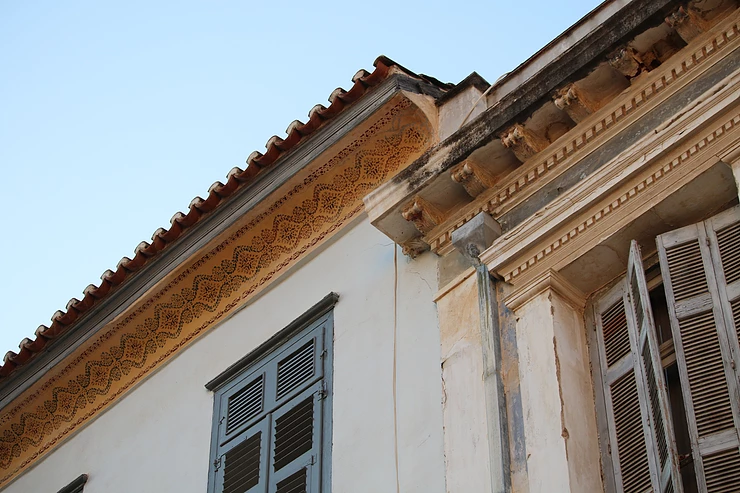
Walking down Kapodistriou street and taking a right on the junction with Farmakopoulon street, you will have reached the town promenade. In view is a small island called Mpourtzi, which means, by definition, "fortification inside the sea" in Turkish. This important fortress was built by Venetians in 1473. The Ottomans later built a wall over two meters high, turning the fortress into a castle.
Mpourtzi, which today hosts many live musical performances, is marked by a very dark past. According to a local tale, the Venetians built the fortress with the help of Greek slaves, but what they managed to build during the day was demolished during the night, leading the locals and the authorities to suspect that the island was cursed. At first, the Venetians rulers were sacrificing Greek slaves, blaming them for the crumbling of the fortress day after day. Soon, however, a beautiful Greek girl appeared to the Venetian general in a vision, warning him that the only solution to his problem would be to sacrifice herself. With the picture of the beautiful woman on his mind, the general started looking for her around town. He found that she was the daughter of a Greek nobleman, and despite his initial hesitation, he ordered her to be killed. It turned out that sacrificing her was enough to save the fortress.
Mpourtzi continued to provide the locals with dark stories, even when the town was passed down to the Greeks. It served as a prison for many years, while after 1865, it became the permanent residence of the executioners of the guillotine. Apparently, they were not very popular with the locals. Acclaimed Greek writer Andreas Karkavitsas refers to the three executioners who lived in Mpourtzi as the ‘three dragons’ in one of his novels. Refusing to share the same space with them, the executioners were moved to Mpourtzi, which they were only allowed to exit accompanied by a constable.
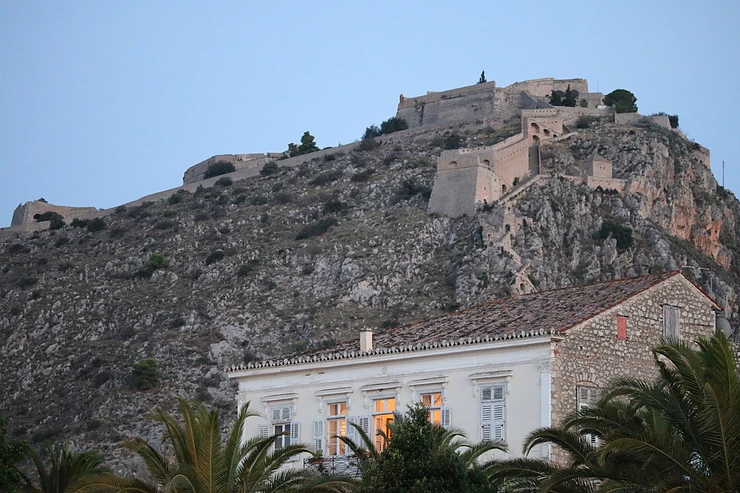
Today, a boat trip to Mpourtzi is a common visitor activity. One of its highlights is the magnificent view it offers to Palamidi fortress, the top of which the visitor can reach by climbing 999 stairs. Though Palamidi is known for its breathtaking views of Nafplio and the Argolic Gulf, it was once a place no local would rather be. One of the bastions in Palamidi served as the prison cell of the famous war hero and leader of the independence movement, Theodoros Kolokotronis.
Seen as a political threat for the British and French interests in Greece, Kolokotronis was initially sentenced to death for plotting against the King, a decision that triggered serious reactions, especially by the president of the jury and a lawyer who denied to sign in favor of death as a penalty. It was eventually decided to give him a life sentence. Though he was freed a few months later, Kolokotronis’ description of his time in prison is vivid: "I was asking myself whether I was me or someone else. I did not know why I was imprisoned. With time, I started suspecting that maybe the government, realizing the respect people show for me, imprisoned me to stop spreading my influence."
Dark stories, most of them deeply political, make Nafplio apart from romantic, a town with an aura of mystery and suspense still lurking in the air. Its history is entwined with the history of the modern Greek state and some of the most acclaimed personalities of the era. Here lived Venetian commanders, Ottoman Pashas, executioners, exiles, insurgents, and leaders of the Greek revolution.
In Nafplio however, history, rumors, and local myths are often blended together. The quest for an absolute truth therefore disappears, replaced by a rather personal choice: to either dig deeper into these sinister stories, or continue leaving our fantasy adrift.
--
Ismene Kilia studied English Language and Literature at National and Kapodistrian University of Athens and recently completed a Master's Degree in Tourism and Culture at Radboud University. She is interested in storytelling and cultural representations in tourism. In September 2019 she presented her paper 'Representations of Greece in the Wide World Magazine' in the 8th annual ESPRit conference, ''Magazines and Visual Culture."

